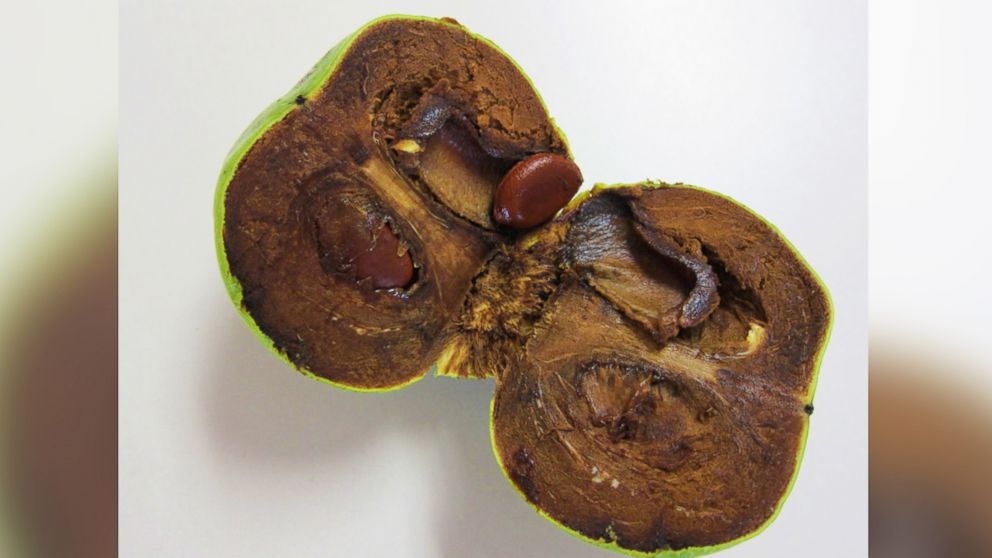Meet the Chocolate Pudding Fruit
It’s unclear why, but very few Americans are aware of the sweet black sapote.

— -- It’s unclear why, but few Americans are aware of black sapote. It sounds sinister, yet that couldn’t be a more wrong characterization of this tropical fruit. More accurate would be sweet and custardy with chocolate notes. That’s right – this fruit in its ripest state tastes like a natural chocolate pudding.
Related to the persimmon, the black sapote is native to Mexico, Central and northern South America, but is also cultivated in Florida, California and Hawaii.
Beneath its tough, green skin lays endless possibilities, according to the Institute of Culinary Education’s creative director Michael Laiskonis.
“Halve it, take the seeds out and you can eat it right out of the skin itself, or I could see it easily being pureed into a sauce and added to a custard, sorbet or ice cream base. You can puree it into a beverage or maybe even a cocktail,” he said. “If you were to put it into something like a cake, I probably would start with a reference base recipe, like banana bread. Whatever quantity of banana is called for I would substitute with the black sapote, because it’s roughly the same amount of moisture.”
Or, if you want to go all out, try Amy Lyons' recipe for Chocolate Sapote Cake with Kumquat Orange Marmalade.

Laiskonis warned, though, that the fruit is only enjoyable in its most ripe state.
“Its sweetness and those chocolatey flavors definitely need that super-ripening to fully develop in my experience,” he said. “When it’s super ripe, it has almost a pudding-custard like texture. But otherwise the sweetness hasn’t developed, and it’s dry and astringent.”
If you can’t find black sapote at your local grocery, try purchasing it on Amazon or LocalHarvest when the fruit is in season from late fall to early winter.




